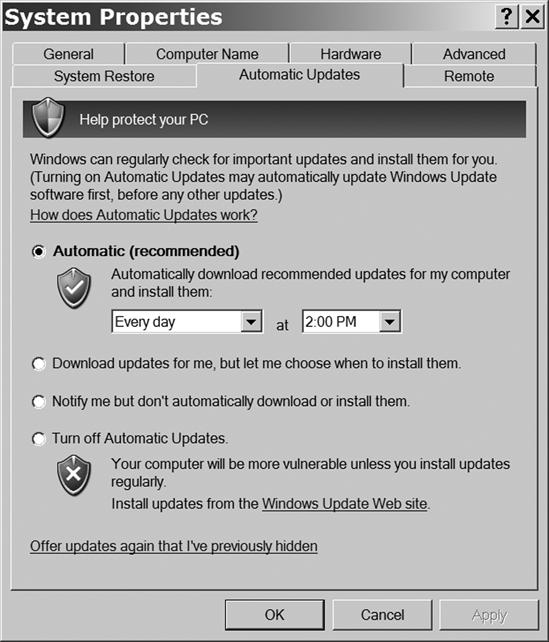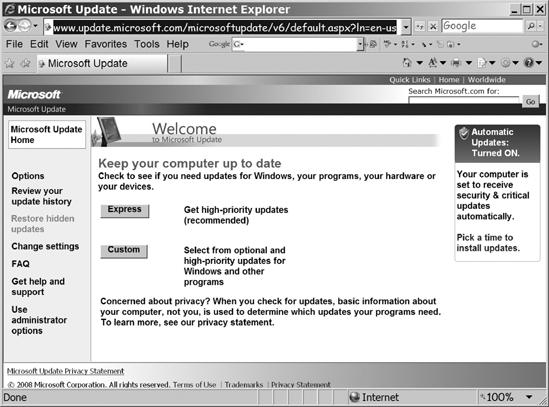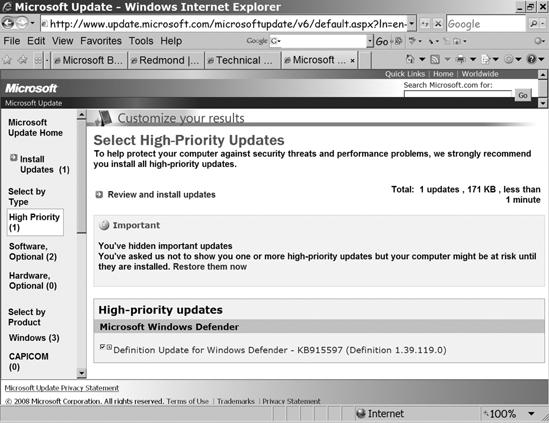Microsoft distributes security updates and patches through the Internet at least once every month that include fixes for newly discovered security problems. You can manually check for updates and select the ones that you want to install, but it's a lot easier to let Windows automatically check for newly released update packages and install them for you. As network manager, you will want to set all the Windows computers on your network to run Automatic Updates.
To run Automatic Updates, follow these steps:
Right-click My Computer and select Properties from the pop-up menu. The System Properties window will appear.
Choose the Automatic Updates tab from the System Properties window. The dialog shown in Figure 13-19 will appear.
Choose an option to set the way your computer will handle new updates. In most cases, the Automatic option is the best choice, but if you're using this computer for programs that require most of the system's processing power, such as sound or video recording, select the Notify me but don't automatically download or install them option instead.
Click OK to save your settings and close the System Properties window.
Automatic Updates loads changes that somebody at Microsoft has flagged as essential to the computer's performance or security, but it ignores many others, including new versions of device drivers and updates that add or improve other features for Windows and some related programs. To find and select these programs, follow these steps:
If you aren't already connected to the Internet, connect your computer now.
From the Start menu, choose Windows Update. You can also find a link to this command in Internet Explorer's Tools menu.
After the Update website confirms that it has installed the software it uses to scan your computer, the site displays the Welcome screen shown in Figure 13-20. Click the Custom button.
After the program completes its search for new programs, it will display a list like the one shown in Figure 13-21. Use the list of update types in the left column to display a list of available updates in each category. Don't forget to scroll down the list to see all the categories.
Choose the updates you want to install in each category from the right panel. The number in parentheses next to Install Updates in the left panel shows the number of updates you have selected.
Click Install Updates. The Review and Install Updates panel will appear on the right side of the window.
Click the Install Updates button. The update program will load the updates you have selected, one at a time. If necessary, the Update routine will restart the computer to complete one or more updates.



